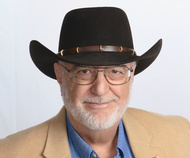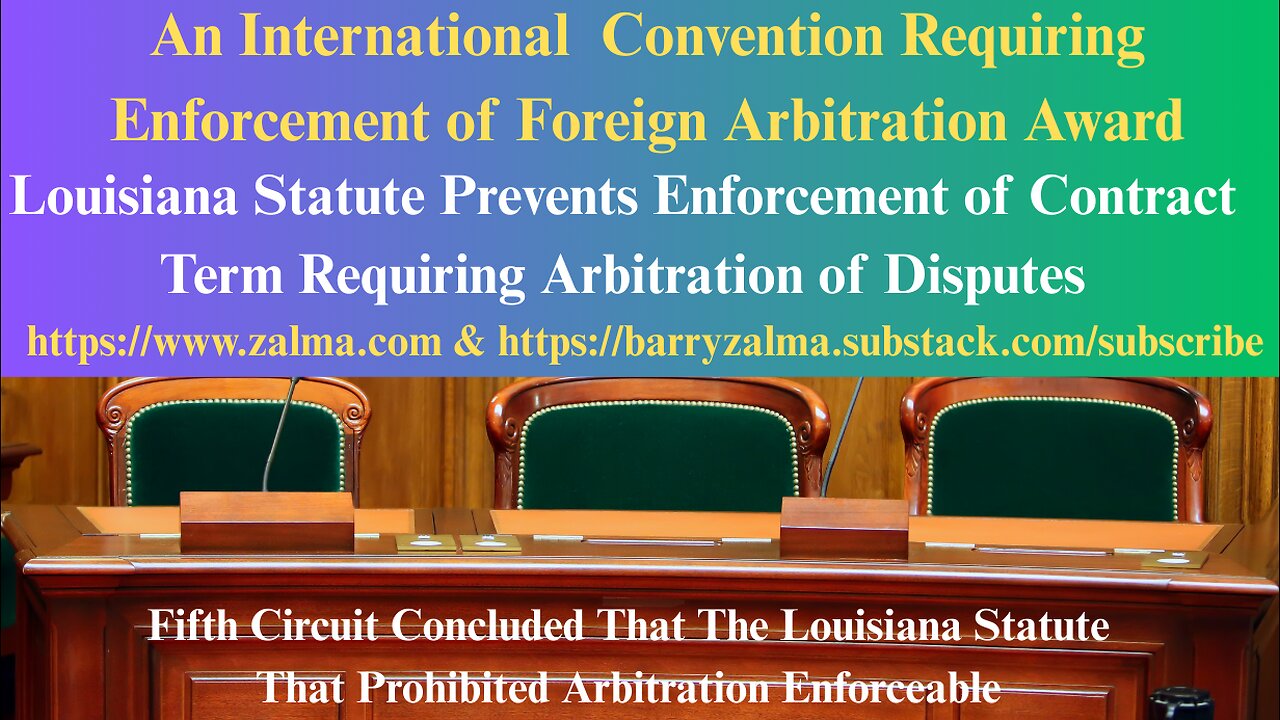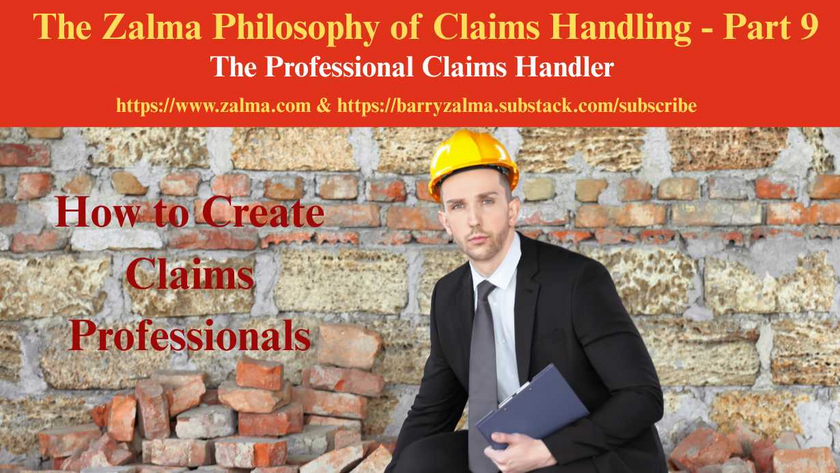
The Covenant of Good Faith
The Tort of Bad Faith
Barry Zalma
Read the full article - much longer than this summary - at https://lnkd.in/g4rt8_rX and see the full video at https://lnkd.in/gMSi_P5j and at https://lnkd.in/g8ghCj2n and at https://zalma.com/blog plus more than 4400 posts.
The implied covenant of good faith and fair dealing is a concept of insurance law at least three centuries old. It first appeared in British jurisprudence in a case decided by Lord Mansfield sitting in the House of Lords as the highest court in Britain. In Carter v. Boehm. 3 Burrow, 1905, Lord Mansfield explained that insurance is a contract upon speculation; the special facts upon which the contingent chance is to be computed, lie, most commonly, in the knowledge of the insured only. The underwriter trusts to his representation, and proceeds upon confidence that he does not keep back any circumstance in his knowledge, to mislead the underwriter into a belief that the circumstance does not exist, and to induce him to estimate the risk as if it did not exist.
The keeping back such circumstance is a fraud, and therefore the policy is void. Although the suppression should happen through mistake, without any fraudulent intention, yet still the underwriter is deceived, and the policy is void; because the risk run is really different from the risk understood and intended to be run, at the time of the agreement. [The Chicago v. Thompson, 19 Ill. 578, 1858 WL 5993, 9 Peck 578 (Ill. 1858)] and the contract of insurance is founded on good faith.
Lord Mansfield stated the rule still followed to this day:
"Good faith forbids either party by concealing what he privately knows, to draw the other into a bargain, from his ignorance of that fact, and his believing the contrary."
THE DUTY TO ACT IN GOOD FAITH
The implied covenant explains that no party to a contract of insurance should do anything to deprive the other of the benefits of the contract.
For insurance to work; for each insurer to properly evaluate the risks presented; for each insurer to obtain the insurance desired; and for each insured and insurer resolve all claims fairly and equitably they must treat each other with the utmost good faith and do nothing to deprive the other of the benefits of the contract.
Each party to the contract of insurance is expected to treat the other fairly in the acquisition and performance of the contract. For example, the prospective insured is required to answer all questions about the risk he, she or it are asking the insurer to take and about the person the insurer is asked to insure. Similarly, the insurer must honestly, clearly and in good faith explain to the insured(s) the risks the insurer is willing to take and the terms, conditions and provisions of the contract of insurance.
THE CREATION OF THE TORT OF BAD FAITH
A tort is a civil wrong from which one person can receive damages from another for multiple injuries to person or property. Insurance, from its inception, was always a contract the breach of which was resolved by traditional contract damages.
Since the first policy written on a clay tablet three to five thousand years ago, if the insurer failed to pay a claim the person insured could sue and only receive the indemnity promised by the contract of insurance and nothing more than pre-judgment or post-judgment interest. In addition, since the idea of insurance started, its practitioners and those insured understood insurance to be a business of the utmost good faith.
The covenant was explained by Lord Mansfield in the British House of Lords, acting as a high court, in 1766 in Carter v. Boehm (1766) 3 Burrow, 1905, 97 Eng. Rep. 1162, 1164 (K.B.).
Such a requirement was rooted in practical wisdom, recognizing that an insurer often lacked the ability to verify the insured’s representations before issuing a policy. This practical wisdom still rings true when applied to marine insurance — an industry in which, for example, a policy may have to be issued in London, on a time sensitive basis, for a vessel berthed halfway across the globe.
American courts first recognized the doctrine of uberrimae fidei (utmost good faith) in connection with marine insurance contracts in the early nineteenth century.
The U. S. Supreme Court confirmed the strict disclosure requirements that the doctrine imposed on an insured in Sun Mut. Ins. Co. v. Ocean Ins. Co., 107 U.S. 485, 510-11, 1 S. Ct. 582, 27 L. Ed. 337 (1883).
The judicial basis for the creation of the tort of bad faith was justified because the court concluded, from the evidence produced, that the insurer failed to treat an insured fairly and in good faith. The court felt that the traditional contract damages were insufficient to properly compensate the insured.
By so doing courts that accepted the existence of a tort of bad faith, did away with centuries of insurance jurisprudence and allowed the insured to receive, in addition to the contract damages that the insured was entitled to receive under the contract had the insurer treated the insured fairly, tort damages to punish the insurer for its wrongful acts.
Insureds, lawyers for insureds, regulators, and courts across the United States cheered the action of the California Supreme Court, for providing a fair remedy to abused insureds. Most of the states emulated the California Supreme Court and adopted the tort created by the California Supreme Court either by statute or court decision.
After the creation of the tort of bad faith, if an insurer and insured disagreed on the application of the policy to the factual situation, damages were no longer limited to contract damages as in other commercial relationships. If the court found that the insurer was wrong, it could require an insurer to pay the contract amount plus damages for emotional distress, pain, suffering, punishment damages, attorney fees, and any other damages the insured and the court could conceive in order to deter other insurers from treating their insureds badly. The good intentions of the courts and regulators led to thousands of lawsuits that they believed would deter the wrongful conduct.
The courts and legislators adopting the tort of bad faith hoped that the tort of bad faith would have a salutary effect on the insurance industry and force insurers to treat their insureds fairly. However, contrary to the honest and good faith intent of the court, the good intention was contradicted by intelligent lawyers who caused denial of a claim for $40 wrongfully denied that resulted in $5 million verdicts.
Juries, unaware of the reason for and operation of insurance, decided that insurers that did not pay claims were evil and that they wrote contracts, so they never had to pay.
The jurors were convinced it was appropriate to punish insurers severely even when the insurer’s conduct was correct and proper under the terms of its contract.
The jurors and judges were not informed that over the centuries insurers paid out more in claims and expenses than they took in premiums, making profits only by wisely investing the premiums they held in reserve to pay claims,
The massive judgments were publicized, and many insurers decided fighting their insureds in court was too expensive regardless of how correct their position was on the contract. They found it less expensive to pay than to fight just as shop owners threatened by the Mafia decided it was better to pay protection to the Mob rather than fight.
Most of the massive verdicts were reversed or reduced on appeal. The bad actors raised their premiums and lost little business. Other insurers, faced with the massive verdicts, allowed fear to control reason, and paid claims that were improper or fraudulent. The extra cost was passed on to all insurance consumers. The insurers who acted improperly were punished less than then honest insurers who were threatened with punitive damages.
The insurers who treated their insureds badly, in fact, profited since they continued their wrongful acts and only were required to pay the few insureds that sued. Those that did not sue added to the wrongdoing insurers profit margins. Honest insurers paid frauds and claims they did not owe and found they needed to raise premium charges to cover the extra expense. The increased premium paid by insureds to cover the extra expense were a clear example of the effect of the law of unintended consequences. The honest insurers who treated those they insured with good faith and fair dealing who paid off fraudsters and paid uncovered claims to avoid bad faith suits needed to charge more than the bad faith insurers who litigated with their insureds.
When I was a young law student, we were taught to either sue in tort and waive assumsit (contract) if you had the facts and the law available to do so. That is no longer the law with regard to contracts of insurance but not with regard to any other contracts.
What Every Insurance Professional, Every Insurance Coverage Lawyer, Every Plaintiffs Bad Faith Lawyer, and Every Insurance Claims Person Must know About the Tort of Bad Faith
Each party to the contract of insurance is expected to treat the other fairly in the acquisition and performance of the contract. For example, the prospective insured is required to answer all questions about the risk he, she or it are asking the insurer to take and about the person the insurer is asked to insure. Similarly, the insurer must honestly, clearly and in good faith explain to the insured(s) the risks the insurer is willing to take and the terms, conditions and provisions of the contract of insurance.
Adapted from my book The Tort of Bad Faith Available as a Hardcover Available as a paperback Available as a Kindle Book.
(c) 2023 Barry Zalma & ClaimSchool, Inc.
Subscribe and receive videos limited to subscribers of Excellence in Claims Handling at locals.com https://zalmaoninsurance.locals.com/subscribe.
Go to substack at substack.com/refer/barryzalma Consider subscribing to my publications at substack at substack.com/refer/barryzalma
Barry Zalma, Esq., CFE, now limits his practice to service as an insurance consultant specializing in insurance coverage, insurance claims handling, insurance bad faith and insurance fraud almost equally for insurers and policyholders. He practiced law in California for more than 44 years as an insurance coverage and claims handling lawyer and more than 54 years in the insurance business. He is available at http://www.zalma.com and [email protected]
Write to Mr. Zalma at [email protected]; http://www.zalma.com; http://zalma.com/blog; daily articles are published at
Zalma on Insurance
Insurance, insurance claims, insurance law, and insurance fraud .
By Barry Zalma
Go to the podcast Zalma On Insurance at https://anchor.fm/barry-zalma; Follow Mr. Zalma on Twitter at https://twitter.com/bzalma; Go to Barry Zalma videos at Rumble.com at https://rumble.com/c/c-262921; Go to Barry Zalma on YouTube- https://www.youtube.com/channel/UCysiZklEtxZsSF9DfC0Expg; Go to the Insurance Claims Library – https://zalma.com/blog/insurance-claims-libraryWrite to Mr. Zalma at [email protected]; http://www.zalma.com; http://zalma.com/blog; daily articles are published at https://zalma.substack.com. Go to the podcast Zalma On Insurance at https://anchor.fm/barry-zalma; Follow Mr. Zalma on Twitter at https://twitter.com/bzalma; Go to Barry Zalma videos at Rumble.com at https://rumble.com/c/c-262921; Go to Barry Zalma on YouTube- https://www.youtube.com/channel/UCysiZklEtxZsSF9DfC0Expg; Go to the Insurance Claims Library – https://zalma.com/blog/insurance-claims-library
Subscribe and receive videos limited to subscribers of Excellence in Claims Handling at locals.com https://lnkd.in/gfFKUaTf.
Go to substack at https://lnkd.in/gEEnV7Dd Consider subscribing to my publications at substack at https://lnkd.in/gEEnV7Dd
Barry Zalma, Esq., CFE, is available at http://www.zalma.com and [email protected]
Go to Barry Zalma videos at Rumble.com at https://lnkd.in/gV9QJYH; Go to Barry Zalma on YouTube- https://lnkd.in/g2hGv88; Go to the Insurance Claims Library – https://lnkd.in/gWVSBde
Detail Charging Defendant for Fraud is Sufficient
Post 5242
Read the full article at https://lnkd.in/g_HVw36q, see the video at https://lnkd.in/gpBd-XTg and at https://lnkd.in/gzCnBjgQ and at https://zalma.com/blog plus more than 5200 posts.
Charges that Advises the Defendant of the Crime Cannot be Set Aside
In United States Of America v. Lourdes Navarro, AKA Lulu, No. 25-661, United States Court of Appeals, Ninth Circuit (December 4, 2025) Lourdes Navarro appealed the district court’s denial of her motion to dismiss the indictment and enter final judgment was in error.
FACTUAL BACKGROUND
The indictment alleged that insurers reimburse only for medically necessary services. Navarro performed unnecessary respiratory pathogen panel (RPP) tests on nasal swabs collected from asymptomatic individuals for COVID-19 screening.
Navarro billed over $455 million to insurers for those additional RPP tests that she knew to be medically unnecessary. These allegations constituted a plain, concise, and definite written ...
Louisiana Statute Prevents Enforcement of Contract Term Requiring Arbitration of Disputes
Post 5241
Read the full article at https://www.linkedin.com/pulse/international-convention-requiring-enforcement-award-barry-sttdc, see the video at and at and at https://zalma.com/blog plus more than 5200 posts.
In Town of Vinton v. Indian Harbor Insurance Company, Nos. 24-30035, 24-30748, 24-30749, 24-30750, 24-30751, 24-30756, 24-30757, United States Court of Appeals, Fifth Circuit (December 8, 2025) municipal entities including the Town of Vinton, et al sued domestic insurers after dismissing foreign insurers with prejudice. The insurers sought arbitration under the Convention on the Recognition and Enforcement of Foreign Arbitral Awards (the “Convention”) but the court held Louisiana law — prohibiting arbitration clauses in such policies—controls, as the Convention does not apply absent foreign parties who ...

Refusal to Provide Workers’ Compensation is Expensive
Post 5240
Read the full article at https://lnkd.in/guC9dnqA, see the video at https://lnkd.in/gVxz-qmk and at https://lnkd.in/gUTAnCZw, and at https://zalma.com/blog plus more than 5200 posts.
In Illinois Department of Insurance, Insurance Compliance Department v.USA Water And Fire Restoration, Inc., And Nicholas Pacella, Individually And As Officer, Nos. 23WC021808, 18INC00228, No. 25IWCC0467, the Illinois Department of Insurance (Petitioner) initiated an investigation after the Injured Workers’ Benefit Fund (IWBF) was added to a pending workers’ compensation claim. The claim alleged a work-related injury during employment with the Respondents who failed to maintain workers’ compensation Insurance.
Company Overview:
USA Water & Fire Restoration, Inc. was incorporated on January 17, 2014, and dissolved on June 14, 2019, for failure to file annual reports and pay franchise taxes. It then operated under assumed names including USA Board Up & Glass Co. and USA Plumbing and Sewer. The business ...
The Professional Claims Handler
Post 5219
Posted on October 31, 2025 by Barry Zalma
An Insurance claims professionals should be a person who:
Can read and understand the insurance policies issued by the insurer.
Understands the promises made by the policy.
Understand their obligation, as an insurer’s claims staff, to fulfill the promises made.
Are competent investigators.
Have empathy and recognize the difference between empathy and sympathy.
Understand medicine relating to traumatic injuries and are sufficiently versed in tort law to deal with lawyers as equals.
Understand how to repair damage to real and personal property and the value of the repairs or the property.
Understand how to negotiate a fair and reasonable settlement with the insured that is fair and reasonable to both the insured and the insurer.
How to Create Claims Professionals
To avoid fraudulent claims, claims of breach of contract, bad faith, punitive damages, unresolved losses, and to make a profit, insurers ...

The History Behind the Creation of a Claims Handling Expert
The Insurance Industry Needs to Implement Excellence in Claims Handling or Fail
Post 5210
This is a change from my normal blog postings. It is my attempt. in more than one post, to explain the need for professional claims representatives who comply with the basic custom and practice of the insurance industry. This statement of my philosophy on claims handling starts with my history as a claims adjuster, insurance defense and coverage lawyer and insurance claims handling expert.
My Training to be an Insurance Claims Adjuster
When I was discharged from the US Army in 1967 I was hired as an insurance adjuster trainee by a professional and well respected insurance company. The insurer took a chance on me because I had been an Army Intelligence Investigator for my three years in the military and could use that training and experience to be a basis to become a professional insurance adjuster.
I was initially sat at a desk reading a text-book on insurance ...

The History Behind the Creation of a Claims Handling Expert
The Insurance Industry Needs to Implement Excellence in Claims Handling or Fail
Post 5210
This is a change from my normal blog postings. It is my attempt. in more than one post, to explain the need for professional claims representatives who comply with the basic custom and practice of the insurance industry. This statement of my philosophy on claims handling starts with my history as a claims adjuster, insurance defense and coverage lawyer and insurance claims handling expert.
My Training to be an Insurance Claims Adjuster
When I was discharged from the US Army in 1967 I was hired as an insurance adjuster trainee by a professional and well respected insurance company. The insurer took a chance on me because I had been an Army Intelligence Investigator for my three years in the military and could use that training and experience to be a basis to become a professional insurance adjuster.
I was initially sat at a desk reading a text-book on insurance ...














